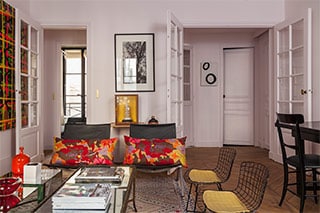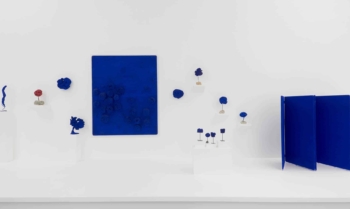Why and how to insure art, antiques and collectables
Many people have art which they have accumulated or inherited but don’t consider themselves ‘collectors’. As a result, they are often reluctant to regard such possessions as valuable and worth protecting.
But this ignores the fact that antique values are dynamic and change according to prevailing tastes. There are inevitably many categories of art which are not as sought after now as they were say 30 years ago. Notable amongst these and often cited are so-called brown furniture and Victorian pictures by minor artists – precisely the sort of thing that many people have inherited. On the other hand, we all read about the inherited Chinese vase stored for years in a kitchen cupboard or used as an umbrella stand that turns out to be worth hundreds of thousands of pounds

Many of us buy art and antiques mainly because they and are affordable with the aim of furnishing a house not with any plan as to its future value.
Over the years, these accumulations of items do change in value both up and down, but this is not necessarily reflected in the insurance cover. It is all too easy to tick the contents box with a nice easy overall value when it comes to renewal and not actually think what might happen in the event of a specific claim.
While there might be pieces that you would be glad to see the back of, that doesn’t necessarily mean that they don’t have any value just as there will be sentimental objects which you adore but have very little.
Unless you are a keen follower of art market trends, you might not be aware that recent auction house sales have produced high prices say for Arts & Crafts furniture that you have collected for years or that a West End dealer is promoting a painter, work by whom you inherited.
Often, people are equally reluctant to consult a valuer because they think that they will charge a percentage of the value which is not the case or because they think that what they have doesn’t justify it.
Valuers do in fact charge a fee based on time spent and will be happy to give an estimate of this on their first visit.
The costly part for them is identifying and cataloguing the collection so if there are receipts available or good workable descriptions, these will help to keep the cost down.

The valuation process is not a scientific practice but is rather based on a series of criteria such as artist or maker, quality, condition, size and market desirability or fashion.
The major advantage is that an agreed value schedule not only gives the owner peace of mind but means that if there is a claim and a prized possession is lost, damaged or destroyed, they will receive the correct amount of compensation quickly and amicably.
Having got to this stage, what next?
Navigating your way through the thicket of insurance companies is not easy particularly as the specialists do not customarily deal directly. Again, many people equate the idea of specialist with more expense, but the most important element is expertise and understanding. Insurance brokers are there to guide you through this process and their role is to marry the profile of the client to the right insurer at the right price.
Apart from having the right insurance in place, what more should you do to ensure the protection and longevity of your collection?
The insurers will have requirements in terms of security and fire protection and your broker will be able to offer advice on this. Most specialist insurers understand that people do not want to live in Fort Knox and it is the broker’s role to point out factors that will ameliorate the risk like occupancy, location, the nature and value of the collection and of course, claims history.
It is not always appreciated but the price and the terms of your insurance will also be influenced by what underwriters refer to as good risk management and housekeeping, by which they mean, how the collection is hung or displayed and generally taken care of.

It is therefore worthwhile to ensure that you check pictures periodically to ensure that they are secure. Often older pictures for instance are hung with string or even thin wire which can deteriorate over the years. Frames can loosen and often old mounts are not acid free and can diminish the value of a work on paper.
Both pictures and furniture are vulnerable to light and heat and in particular, dramatic variations in either. It is therefore wise to avoid hanging pictures in direct sunlight or over radiators for instance. While humidity and light levels are assiduously controlled in museums, it is not possible or desirable to do this in a home but simple tricks like keeping blinds down when a room is not in use and putting out bowls of water if you are aware that a room is particularly dry, are worthwhile measures.
For those items which are damaged or is simply showing signs of age, it makes sense to consult a specialist conservator. It might only require a light clean but it can make all the difference to your appreciation of the picture or object.
If something from your collection needs to be sent away for re-framing or conservation or possibly on exhibition somewhere, it is vital to ensure that it is moved securely and safely. If it is small and of little value, this can probably be done by you but for anything fragile or valuable, this should be undertaken by a fine art shipper. In the case of sending an items for exhibition, a conservation report which documents in detail the precise state of the item prior to transit will be a requirement.




